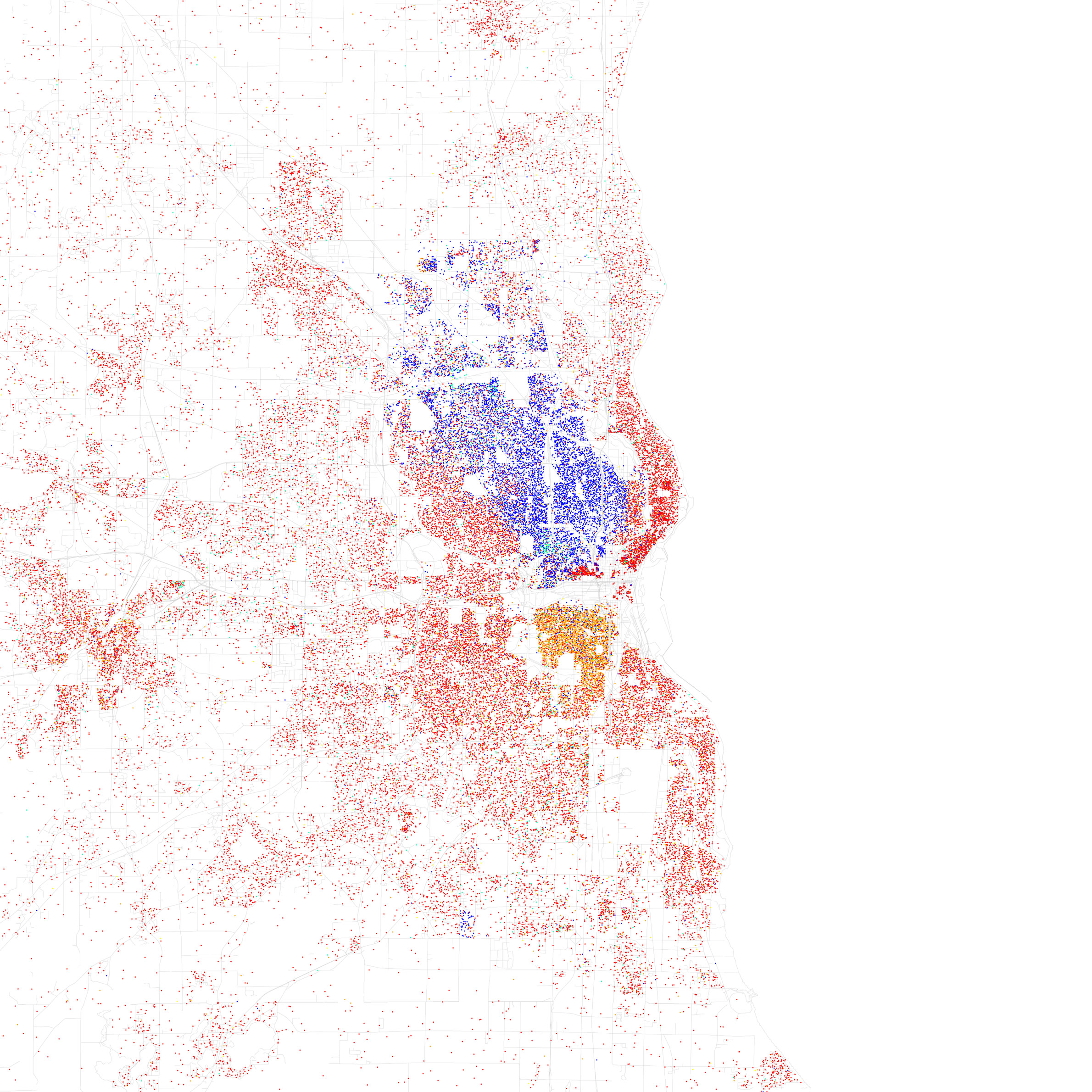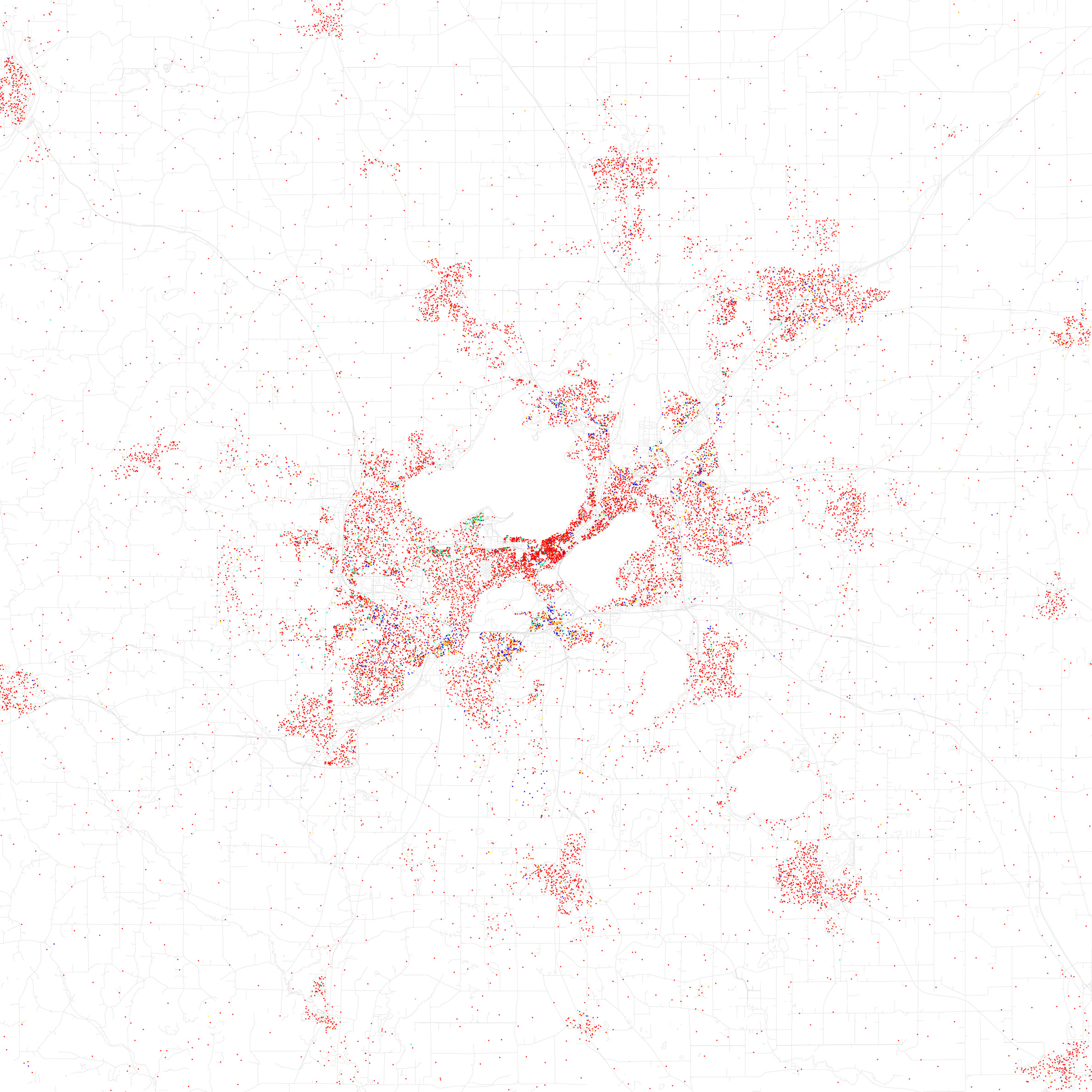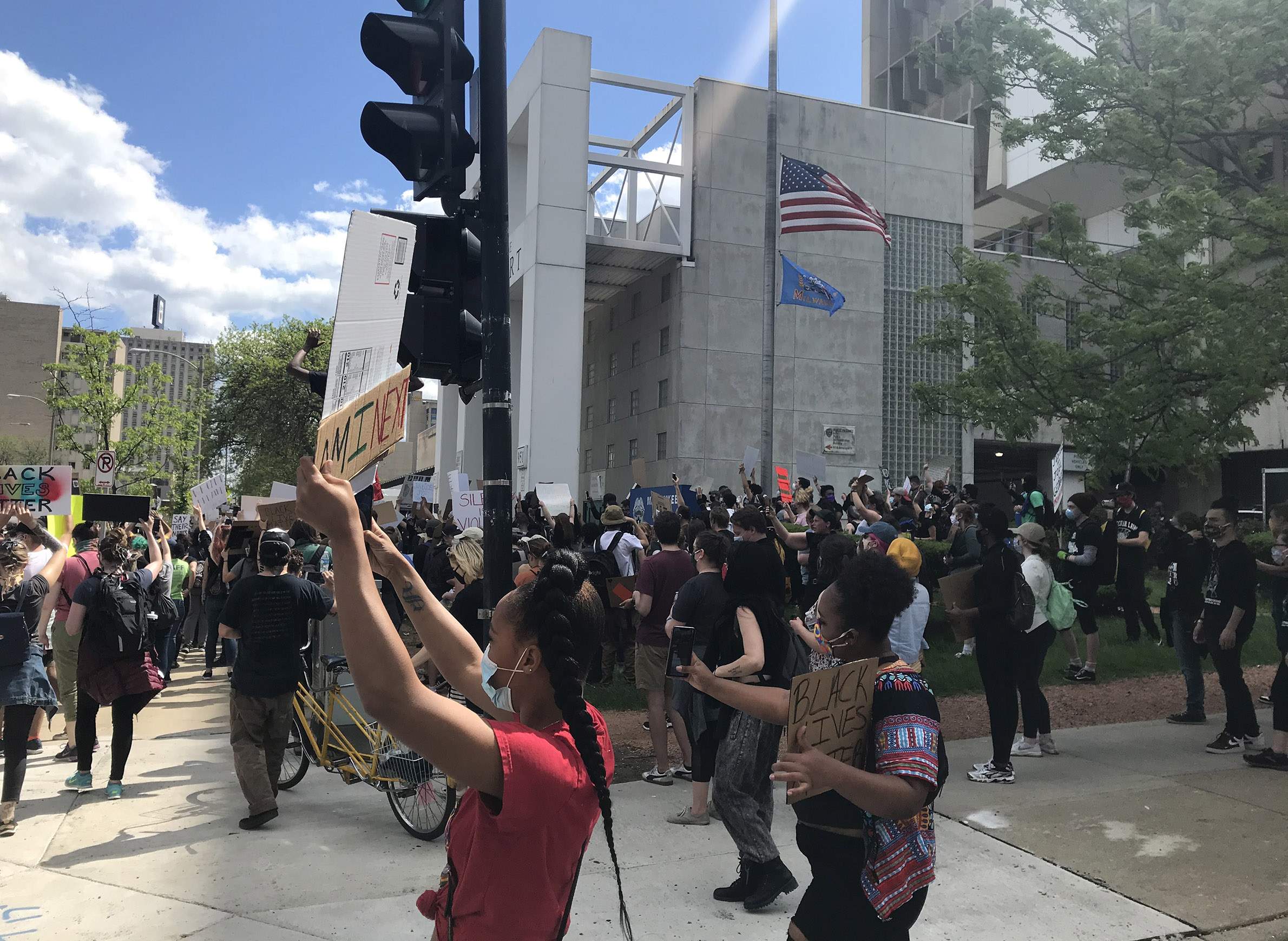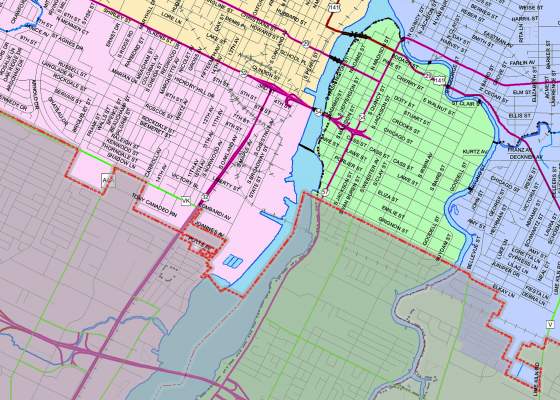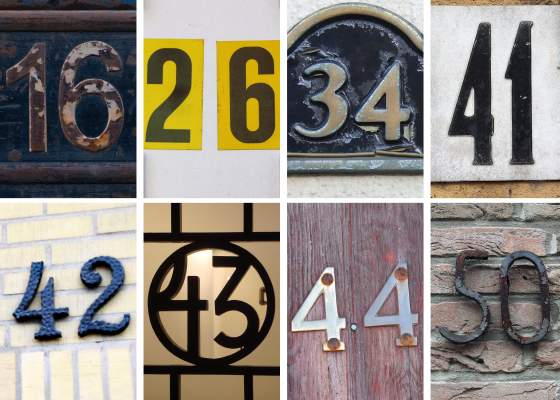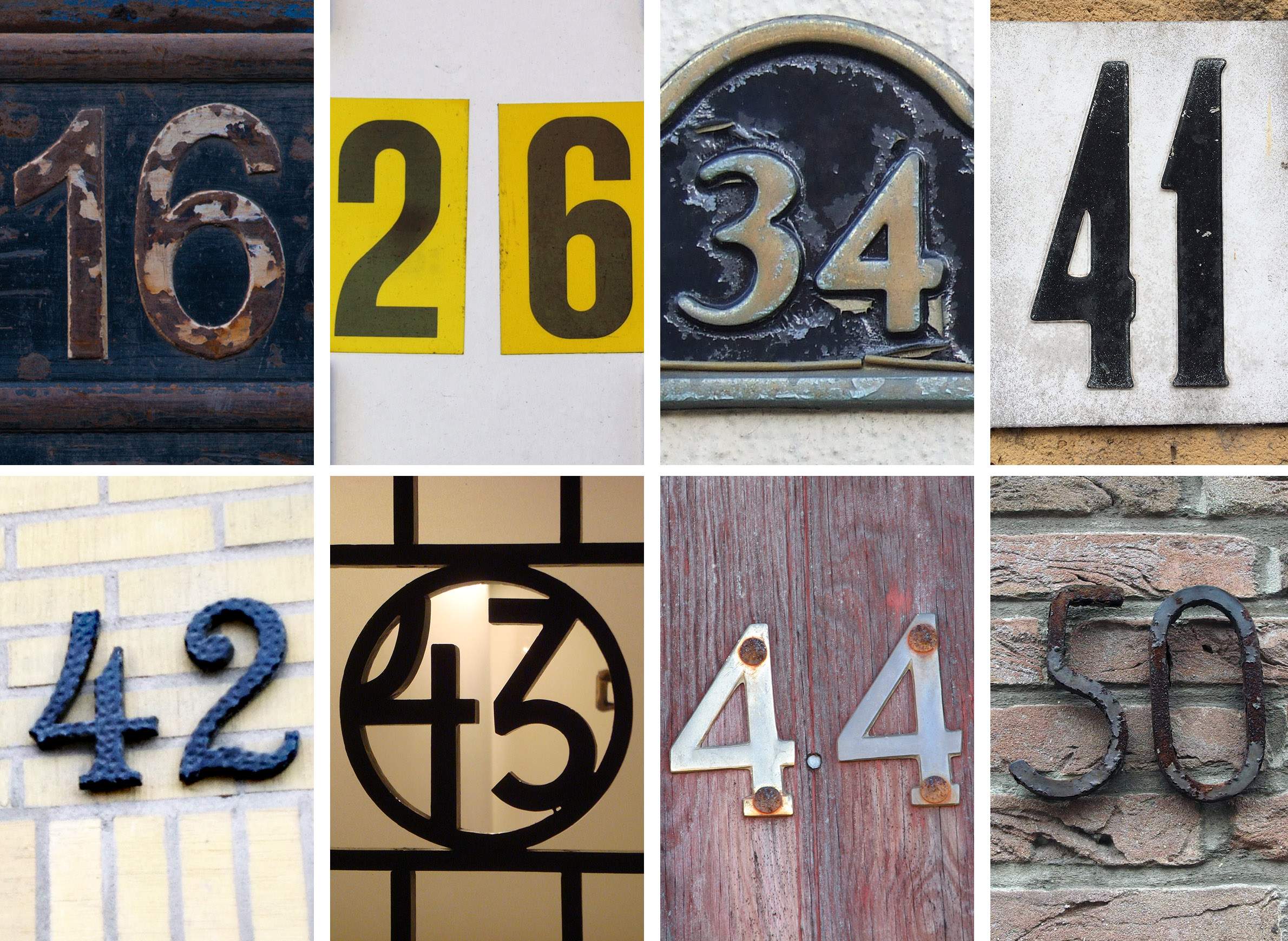
Many Police Officers In Wisconsin Live Outside The Cities Where They Serve

The killing of George Floyd, a Black resident of Minneapolis, reignited ongoing protests against police brutality — a movement fueled in part by a widening breach between law enforcement and the local communities they are charged with serving.
In Wisconsin, the most persistent demonstrations have been in its largest cities, Milwaukee and Madison, but protestors have taken to the streets across the state, including many smaller communities. They're demanding justice for Floyd and many other people killed by police and seeking to confront racism in policing and American life more broadly.
The sentiments of this movement have ranged widely, from calls for changing law enforcement culture to demands for significant policing reforms to wholesale dismantling of local police departments.
One of many long-standing points of contention centers not on policing practices, but rather on the connection individuals responsible for policing local communities have to these places.
Residency requirements and community policing
In theory, where police officers live — whether or not they reside in the jurisdiction where they serve — has the potential to impact relationships between communities and police.
This argument resurfaced in the Twin Cities following George Floyd's killing by police officers on Memorial Day 2020. Only about 8% of Minneapolis police officers live in the city, according to an analysis by the Star Tribune. That eye-popping figure has prompted some activists, in Minneapolis and elsewhere, to call for requirements that police officers reside in the cities where they serve.
For activists in Wisconsin as well, it's a straightforward argument.
"If you live in a community where you police, you are going to do things a little bit different," said Khalil Coleman, a Milwaukee activist and organizer of protests to change policing in the city. Coleman shared his thoughts during a virtual luncheon hosted by the Milwaukee Press Club on June 29.
"We've got people coming from Wauwatosa, Shorewood, Whitefish Bay … coming to Milwaukee to police us. They don't live with the community," said Coleman.
Living and working in one of the most racially segregated metropolitan areas in the nation means that Milwaukee police officers who live in suburbs or rural places outside the city are likely to patrol neighborhoods with vastly different racial and socioeconomic makeups than their own, a pattern that's been in place for decades. This dynamic is a problem, in the view of Coleman and other activists, as it carries the potential to set up an "us-versus-them" mentality among police officers and residents.
At the very least, Coleman insisted, officers who commute from homes outside the city are liable to be less familiar with local happenings and with neighborhood leaders than they would be if they lived in Milwaukee. At the same time, he added, officers who live where they work may feel more accountable to the community and be better positioned to de-escalate conflicts between residents. The fundamental concept that local elected officials must be residents of the places they represent is grounded in the same reasoning.
"That's community policing. That's what we want to see," Coleman said.
"We've got to bring back the residency clause," he added.
In Milwaukee, such a clause mandated in-city residence for not only police officers but all city employees for three-quarters of a century. Such residency requirements were once common in American cities and often applied to all municipal employees — not just police. But many states and cities have moved away from such rules in recent years, including Wisconsin.
In 2013, former Wisconsin Gov. Scott Walker, a Republican who was Milwaukee County Executive prior to running for statewide office, signed a budget bill into law that also largely preempted local governments' authority to set rules of employment that include a residency requirement. It did allow cities to enforce requirements that police, firefighters and emergency workers reside within 15 miles of city limits.
The city of Milwaukee fought the preemption law in court, but a June 2016 decision by the Wisconsin Supreme Court upheld it. Some of the law's most vocal supporters were police and firefighters unions.
In the years since, police officers and other city employees have been moving out of Milwaukee in large numbers. By fall 2019, only three years since the city gave up on enforcing its residency requirement, 55% of officers employed by the Milwaukee Police Department remained city residents.
While Milwaukee's racial dynamics and policing history are unique in Wisconsin, where law enforcement officers live carries implications for the nature of policing in cities across the state. Data about residency, though limited and imperfect, can help shed light on this aspect of the structure of local police departments in Wisconsin's increasingly diverse urban centers.
Interpreting residency data
Assessing the residency status of police officers in Wisconsin cities is a complex matter with imperfect results.
In June, WisContext and Wisconsin Public Radio reached out to eight cities across the state to request data about the residency status of their police officers: Beloit, Green Bay, Kenosha, Madison, Milwaukee, Racine, Waukesha and Wausau. These cities are spread geographically across Wisconsin and are home to larger communities of people of color relative to their total populations than the state as a whole.
Among these cities, not a single police department employs a force in which even half of their officers live within their jurisdiction.
However, the clarity of residency data varied considerably among cities, largely related to concerns over the confidentiality of officers' private information and varied record-keeping practices.
Data shared by the cities of Beloit, Green Bay, Kenosha, Waukesha and Wausau left open the possibility of misidentifying the municipality where some police officers live. This potential gap is a result of the data including only a city name and sometimes zip code associated with each officer. This portion of an address does not always accurately indicate if the officer lives within a city, as zip codes often cross municipal boundaries.
Imperfect as the limited information about police residency in these cities may be, it still allows for some broad interpretations and comparisons.
For instance, even considering that a portion of officers listed with Green Bay addresses likely live in surrounding communities, only 43% of the city's 177 officers have Green Bay addresses. The actual percentage is likely at least somewhat lower. And while a majority of officers have addresses in and immediately surrounding the city, some are listed as residing considerable distances from Green Bay. These include three officers with Appleton addresses, and one each in Algoma, Shawano, Shiocton and Manitowoc, each about a 45-minute drive away.
The percentage of officers with Green Bay addresses is about the same as the national average for police departments in large cities. An analysis by FiveThirtyEight found on average about 40% of police officers live in the cities where they serve.
Similar percentages of in-city addresses for police officers were reported by officials in Beloit (42%), Kenosha (44%) and Wausau (41%), with the same issue of zip codes potentially inflating these figures.
The data shared by the city of Waukesha shows a significantly lower percentage of in-city addresses for officers, at 26%. This smaller figure is perhaps predictable as Waukesha forms part of Milwaukee's suburban ring rather than anchoring its own urban area.
As in Green Bay, police officers who work for these cities but don't live within them generally hail from nearby communities, though the data show that's not always the case. For instance, officers in Beloit come from as far away as Milwaukee and its suburbs, while Kenosha employs three officers from the northwest Chicago suburb of Mundelein, a roughly 45-minute drive away.
More solid information
While police officer residency data shared by some Wisconsin cities left room for doubt about where exactly some officers live, the information produced by the cities of Madison, Milwaukee and Racine offers a firmer idea of at least how many officers reside in the cities where they are employed.
In Madison, about 34% of the 517 police officers employed by the city lived within the city limits as of June 2020.
The information the city shared only tallied how many officers live within Madison and how many reside outside the city. Data produced by the city of Milwaukee was similar, and neither city shared a list of other municipalities where officers reside.
In Milwaukee, the percentage of officers residing in the city is highest among the cities polled, at just below 50%. This figure is a lingering effect of the city's long-running residency requirement.
With these numbers in mind, another interpretation of Milwaukee's data is that officers are departing the city at a rapid clip, with the total having taken only a few years to fall by half. And in only the nine months between August 2019 and May 2020, the percentage of in-city officers dropped another 5%.
The data produced by the city of Racine offers the most complete — and starkest — view of the residency status of officers for any city in Wisconsin. The Racine data includes a breakdown of the city name associated with the address for each of its officers, as well as a notation as to whether officers with Racine addresses actually reside within that city. The data shows that while 48% of officers have Racine addresses, only 16% live within the Racine city limits.
Similar to the figures produced by Beloit, Green Bay, Kenosha, Waukesha and Wausau, a majority of Racine officers appeared to live in communities near the city, if not within the city itself. But as is the case elsewhere, some officers commute long distances to Racine, with one listed as residing in a Chicago zip code some 65 miles to the south.
Mayors and police chiefs
Whether or not the residency status of police officers matters is a focus of debate, with local elected officials and police leadership in Wisconsin holding sometimes opposing views.
In Madison, Mayor Satya Rhodes-Conway, a Democrat, wrote in a statement that she supports residency requirements for city workers as a general policy, though she noted the state's preemption law takes the authority to impose such rules away from local governments. Madison previously had a residency requirement for police officers, but it has not been in place for decades, she added.
Noting Madison's low rate of officer residency, Rhodes-Conway said she plans to pursue the only remaining policy option available to the city: negotiating residency as part of collective bargaining agreements with the union representing Madison police officers.
In 2019, the city of Milwaukee considered negotiating for residency incentives with its own police officer union.
"The current bargaining agreements for both our police officers and firefighters end in December of 2021, and I hope the unions will work with me to revisit these issues and reverse the trend that has been established over the last few decades," Rhodes-Conway said.
If the views of Madison's Acting Police Chief Victor Wahl are any indication, the mayor may face a battle.
"I don't think it makes any difference," Wahl said about the residency status of officers. Instead, Wahl said his department is focused on hiring "good quality people and people with diverse, broad life experiences who are coming into this field for the right reasons."
Wahl, who has been with the Madison Police Department for 29 years, spoke in part from his personal experience: He and his family moved outside the city a few years ago.
"And it hasn't changed my commitment, or my skills, or my competence, or my level of dedication, or my ability, and I think that's the same for all of our officers," he said.
To the north, Wausau Police Chief Ben Bliven held similar views, though he stressed that the dynamics of policing in Wausau, a city with fewer than 40,000 residents, are a world apart from larger cities like Milwaukee or Madison.
"In this community, I do not believe it's imperative that an officer live within the city limits," Bliven wrote in an email to WisContext, asserting that there is little real difference between the character and makeup of Wausau and the communities that immediately surround it.
"But I might feel differently in a different community," Bliven added. He noted that Wausau does enforce a less restrictive residency requirement still allowed under state law: Officers are supposed to live within 20 miles of the city limits.
Both Bliven and Wahl cited recruitment as informing a large part of their opinions.
"We have had people who choose not to apply with our department because of our [20-mile] residency requirements," Bliven said. "Narrowing the radius would only limit even further our pool of candidates."
To the east in Green Bay, police commander Kevin Warych was also skeptical of broad residency requirements for police officers.
"I don't think an officer — where he or she lives — has any correlation to their dedication to the community," said Warych, who said he lives in Ashwaubenon. Instead, Warych said that community dedication, in his experience, is grounded in an officer's ethical mindset and willingness to engage openly with community members.
Green Bay does enforce a 20-mile radius residency requirement for members of specialized teams like the K-9 and SWAT units.
Meanwhile, Green Bay Mayor Eric Genrich, a Democrat, decried the state's preemption of local residency rules, while conceding that he does not believe such a requirement for Green Bay officers would necessarily improve police-community relations in Wisconsin's third largest city.
"I think it's important for our police officers to have a genuine connection to our community," Genrich said. "Whether or not that's a requirement that they live within the boundaries, I don't know that that necessarily guarantees a closer connection to this community and the folks who live in our neighborhoods."
To the south in Racine, with by far the lowest rate of officer residency among the Wisconsin cities polled, Mayor Cory Mason, a Democrat, described officer residency as a "really important issue."
"I think if you get to a place where 84% of your sworn officers don't live in the community they serve, and then you combine that with how that workforce also doesn't reflect the diversity of the community it serves, it can raise some real tension," Mason said.
Mason was referring to a dynamic he's witnessed between the city's Black and Hispanic communities and a police force that is more representative of the largely white areas around Racine.
"As we're moving forward, we're really committing to doing a better job of recruiting local residents to become police officers," Mason said.
Those efforts include working with the Racine Unified School District to create a "public safety academy," Mason said. The program would allow Racine high schoolers interested in law enforcement to take some focused courses and explore careers with the local police department.
What the research says
Research has shown that residency requirements for police officers in racially diverse American cities may make a police department more diverse, though evidence is lacking that the requirements lead to improved community-police relations.
One study found that residency requirements in the U.S. generally improve representation of Latin American and Asian American communities in police departments, but haven't significantly increased the ranks of Black officers. This study instead found a much larger effect of local political leadership in driving diversification within a police force.
However, a more diverse police force doesn't necessarily equate to better relationships with diverse communities, according to Jirs Meuris, an assistant professor of management and human resources at the Wisconsin School of Business. Meuris studies how different work rules and diversification efforts in police departments have impacted policing outcomes and community-police relations.
"Diversity isn't enough," he said. "You really actually have to manage diversity or diversification of police departments to kind of get the benefit."
In practice, this goal means training officers in the concepts of community policing, Meuris said, and making sure that officers are accountable for applying their training on the job.
Community policing can take many forms but is fundamentally about two things, Meuris said: community relations and proactive policing. The idea is to create relationships between officers and community members outside of punitive law enforcement circumstances.
Without successful implementation of community policing, Meuris said diversification efforts and rules like residency requirements are unlikely to have uniformly positive outcomes. Moreover, he said residency rules can create recruitment challenges for police departments, especially in metropolitan areas with different municipalities where these rules vary.
"The thing with the residency requirement is that it can affect outcomes in so many ways," Meuris said.
This reporting is the product of a collaboration between WisContext and Wisconsin Public Radio. WPR's Corrine Hess contributed reporting to this story. Her story is available here.



